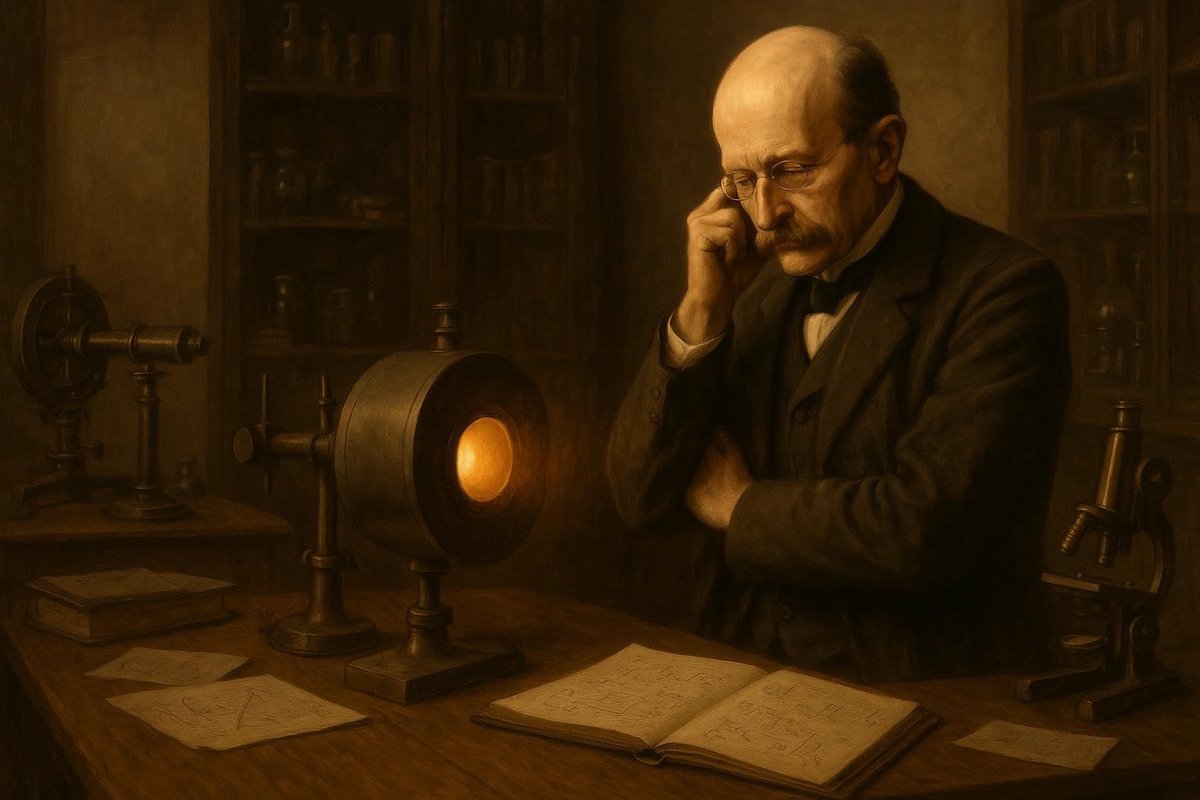
The Problem: Blackbody Radiation and a Cosmic Puzzle
Have you ever wondered why a heated object glows with a specific color at different temperatures? This simple observation puzzled scientists in the late 19th century. The problem, known as blackbody radiation, seemed innocuous at first, but it revealed a gaping hole in classical physics.
Consider this: When a metal heats up, it transitions from red to blue-white. But classical theories lacked the mathematical tools to precisely calculate this color shift. Scientists like Rayleigh and Jeans attempted to explain it using existing laws, but their theories led to the infamous ‘ultraviolet catastrophe,’ predicting infinite energy at high frequencies—a clear contradiction to observed reality.
As the industrial revolution advanced with innovations in energy and light, understanding radiation became crucial. It wasn’t just a quest for knowledge; it was a need driven by technological progress. The stage was set for a mind daring enough to challenge the status quo—enter Max Planck.
The Quantum Leap: Planck’s Revolutionary Idea
Max Planck, a meticulous and disciplined physicist, was about to make an intellectual leap that would alter the course of history. In 1900, with a blend of skepticism and determination, Planck proposed that energy is quantized, meaning it is emitted in discrete packets, or ‘quanta.’
- Imagine energy being offered not as a continuous stream, like water from a hose, but as distinct droplets, each with a specific size.
- Planck’s bold hypothesis suggested that these energy quanta explained the blackbody radiation curve, fitting observations perfectly.
Planck himself was initially hesitant. He famously remarked, “I regarded the quantum hypothesis a mere stopgap.” Yet, his radical idea was precisely what was needed to resolve the ultraviolet catastrophe that plagued his contemporaries.
In an era where scientific ideas often required a leap of faith, Planck’s quantum theory was like discovering a stepping stone across a turbulent river. It provided a new way to navigate the mysterious waters of atomic and subatomic phenomena.
The Evidence: Supporting the Theory
Planck’s theory needed more than mathematical elegance; it required empirical validation. Fortunately, experimentation soon caught up with theory. Albert Einstein extended Planck’s ideas to explain the photoelectric effect, a phenomenon where light ejects electrons from a material.
- Think of sunlight as a series of tiny billiard balls. When they hit a surface, they can knock out tiny particles, but only in specific light quanta.
- Einstein’s work earned him a Nobel Prize in 1921 and firmly established the quantum theory in the scientific community.
As the practical implications of quantization unfolded, quantum mechanics began to underpin new technologies. From semiconductors to lasers, Planck’s initial ‘stopgap’ theory rapidly became the bedrock of modern physics.
Planck’s courage to embrace uncertainty and innovate remains a lighthouse for scientific exploration, demonstrating that sometimes the smallest steps—like the quanta themselves—bring the most profound changes.
The Modern Relevance: Quantum Mechanics Today
Fast forward to today, and the realm of quantum mechanics is as vibrant as ever. It invites us to explore the universe with fresh eyes, offering insights into the very fabric of reality. Quantum mechanics fuels modern technologies that define our daily lives, from the electronic devices we use to advances in quantum computing.
- Imagine computers that operate millions of times faster than today’s supercomputers, thanks to the principles of quantum computing.
- The possibilities are as endless as the universe itself, continually expanding our horizons.
The spirit of inquiry that Planck embodied encourages scientists to push boundaries and question what we know. As our grasp of quantum mechanics deepens, it promises to unlock even more mysteries and technologies, driving innovation and understanding in the 21st century.
Max Planck’s legacy reminds us that daring to think differently can illuminate paths previously shrouded in darkness, offering profound insights into both the minute and the cosmic.
Fuel Someone Else’s Curiosity
Let the wonder of quantum mechanics inspire you. Discuss the ideas over coffee, share this article with a friend, or ponder it during a quiet evening. The excitement of discovery is contagious, and who knows what insights you might spark in another curious mind?

Leave a Reply